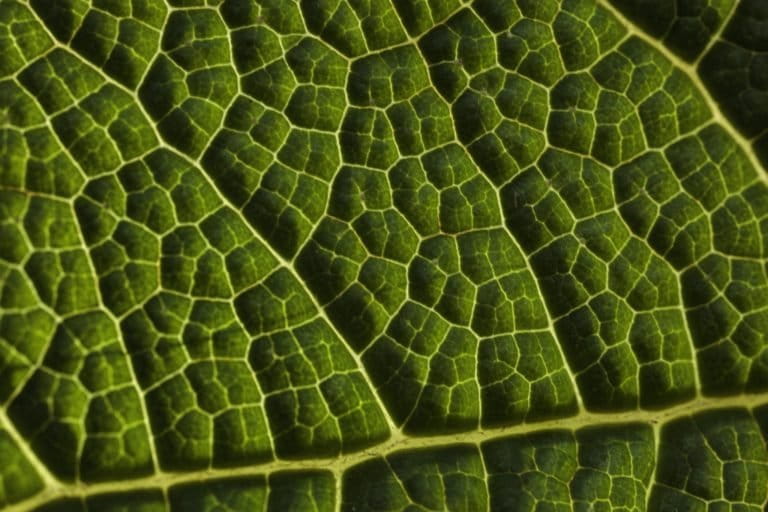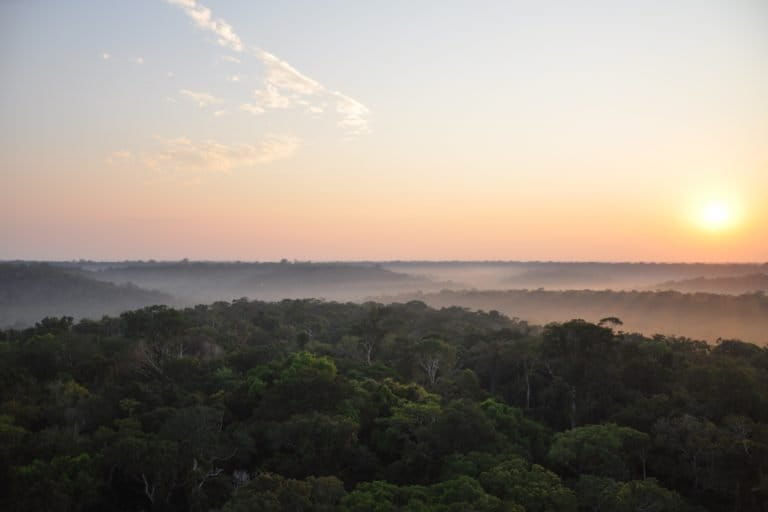- As a strategy to retain water, plants are thought to close their leaf pores in response to dry air, thereby also slowing their rate of photosynthesis. But a study that used machine learning to analyze satellite data found that in some of the wettest areas of the Amazon basin, photosynthesis rates actually increase in dry air.
- The authors suggest that leaf ageing during the dry season may explain this unexpected result, but independent experts question the reliability of methods used to estimate photosynthesis rates, and suggest alternative explanations for the results, such as plentiful soil water and the effect of light availability.
- The findings could have massive ramifications for existing climate change models, which must accurately represent photosynthetic processes in the Amazon if they are to produce meaningful results, given the widespread impact of these vast forests on climate and weather patterns.
- The Amazon Rainforest is one of Earth’s major carbon sinks, and it releases enough water into the atmosphere through transpiration to produce 50% of regional rainfall, making it a major influence on climate and weather patterns across South America and beyond.
In some of the wettest parts of the Amazon rainforest, dry air may increase plant photosynthesis rates — a response that contradicts the assumptions of many climate models, according to a recent study published in Science Advances.
When conditions are dry, plants attempt to retain water by closing the tiny pores on their leaves called stomata. But this also reduces the rate of photosynthesis, with knock-on effects for forest growth, carbon absorption, and large-scale weather patterns. That’s the theory, but data on how these dynamics play out at the scale of whole tropical forests is limited.
An international team of researchers led by Julia Green, a postdoctoral researcher at Laboratoire des Sciences du Climat et de l’Environnement (LSCE) in France, used machine learning to cluster data from nine years of monthly satellite images of South and Central America into areas with similar climate, and modeled the relationship between air moisture and photosynthesis in each cluster. They found that dry tropical forests and savannas showed the expected pattern: photosynthesis slowed in dryer air. However, wetter areas of the Amazon basin displayed a reverse trend, with photosynthesis actually increasing as the air dried, an effect that became even more pronounced in the wet season.

The researchers used sun-induced fluorescence (SIF), a measure of excess light energy released by photosynthesizing leaves, to estimate the rate of photosynthesis using satellite imagery. Experts say there is still scientific debate over the reliability of SIF as a measure of a forest’s photosynthetic output, known as gross primary production (GPP). Green acknowledged that SIF may be an unreliable measure of GPP at the scale of individual leaves, but said that “SIF tracks GPP quite well at the ecosystem scale,” and that this relationship has been widely exploited in other studies.
David Lapola, an Earth system modeler at the University of Campinas (UNICAMP) in Brazil, who was not involved in the study, said he is skeptical about the results, but that “this article opens up a hypothesis that deserves further investigation.”
Plants take action to avoid dehydration
To photosynthesize, plants face a trade-off. Opening their stomata allows them to absorb CO2, a crucial ingredient for photosynthesis, but in doing so they also lose water through the process of transpiration. At the same time, plants need to maintain a continuous column of water from root to leaf. If there isn’t enough water available in the soil to match water loss from the stomata, the water column will become strained and eventually break. To avoid these potentially fatal breaks, plants can partly or fully close their stomata.
The team analyzed four years of hourly data collected at three established monitoring towers in the states of Amazonas, Para, and Tocantins in Brazil, which allowed them to “explain the remote sensing findings and try to link the large scale to the small scale,” Green said. When the air was dry, plants absorbed less CO2, suggesting that their stomata were fully or partially closed, yet their leaves were releasing the same amount of heat, indicating high rates of photosynthesis.

The authors say this can be explained, at least in part, by leaf ageing. At the beginning of the dry season, trees in wet tropical forests drop the leaves at the top of the canopy, allowing more light through and stimulating growth of plants in the understory. By the time the wet season arrives, the shed leaves have been replaced by young leaves that are able to photosynthesize far more efficiently. “Even in the Amazon, the stomata will partially close when the air gets drier, but because of the higher photosynthetic capacity of the young leaves it’s more than compensated for,” Green said.
Marielle Smith, a postdoctoral researcher at Michigan State University in the U.S., who was not involved in the study, says that plentiful soil moisture may explain why plants in wet regions are able to continue photosynthesizing even when the air is very dry.
In a separate study published in Nature Plants in October , Smith and colleagues compared photosynthesis rates with changing air temperature and humidity in a climate-controlled experimental tropical forest biome in Arizona, with data collected at monitoring towers in the Brazilian Amazon, and found declining photosynthesis rates as the air dried, indicating that plants were closing their stomata when they experienced water stress. But “if the potential for hydraulic stress is alleviated by sufficient soil water, the response of stomata to air dryness may be reduced or eliminated. This would mean that forests in wet places could take full advantage of the high light availability that tends to accompany dry air”, Smith said.
Smith also expressed doubts that dry air was the causal factor behind higher rates of photosynthesis in wet regions. “This conclusion is opposite to what we found at the particular sites used in our analyses,” she said, despite using data from two of the same monitoring towers.
The source of this disparity, Smith says, is light. If light availability, which tends to be higher when the air is dryer, is controlled for statistically, the rate of photosynthesis at the monitoring towers declines as air dryness increases. “The tower analyses they use to validate the artificial neural network analysis of SIF show the opposite: [air dryness] has a negative impact on GPP when GPP’s response to light is accounted for,” she said. Therefore, “some independent validation is required in order for this interesting hypothesis to be convincing.”
Experts say controlled experiments are needed to validate and investigate these complex interactions between water availability, climate, and plant physiology in tropical forests. “I’m leading the effort trying to establish a FACE [free-air carbon dioxide enrichment] experiment near Manaus and it might be that we can also change moisture conditions in the air,” Lapola said. “This is a very good suggestion that the authors give and is something we will definitely think about.”

Modeling plant physiology
The researchers applied the same clustering analysis to the outputs from 10 different climate models and found that they failed to replicate the regional differences in photosynthesis found in the satellite data. “Models are overestimating water stress in the Amazon rainforest,” Green said.
Climate models must accurately represent photosynthetic processes in the Amazon if they are to produce meaningful results, because changes in gas and water exchange between these vast forests and the atmosphere can have widespread impact on climate and weather patterns. “This region is bigger than just itself,” Green said.
The Amazon rainforest represents “a huge stock of carbon and flux of moisture to the atmosphere,” Lapola said. “This misrepresentation in vegetation models might significantly change the [predicted] carbon cycle and water cycle in the region.”
Green says the good news is that this data suggest Amazon forests “are potentially more resilient than we thought,” but cautioned that if air dryness exceeds levels currently experienced by Amazon forests, the plant physiological responses observed in this study may change.
The team found that the relationship can reverse during extreme weather events, which are also expected to become more frequent and severe as the climate warms. Their analysis included the El Niño event that caused severe and widespread droughts in the Amazon in 2015 and 2016; for that period, “we see that this positive response of photosynthesis to air dryness either diminished or reversed,” Green said.
Citation:
Green, J. K., Berry, J., Ciais, P., Zhang, Y., & Gentine, P. (2020). Amazon rainforest photosynthesis increases in response to atmospheric dryness. Science advances, 6(47), eabb7232.https://advances.sciencemag.org/lookup/doi/10.1126/sciadv.abb7232
Banner Image: Plants are expected to photosynthesize less in response to dry air, but a machine-learning analysis of satellite data found that the wettest parts of the Amazon basin actually photosynthesize more when the air is dry. Image by CIFOR via Visualhunt (CC BY-NC-ND).
